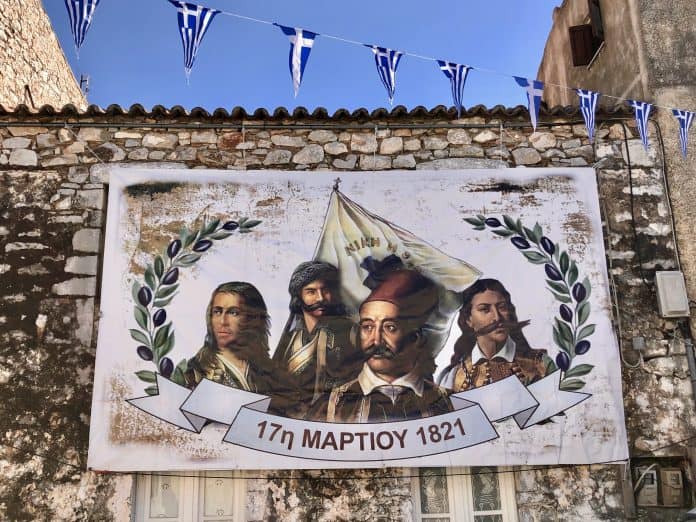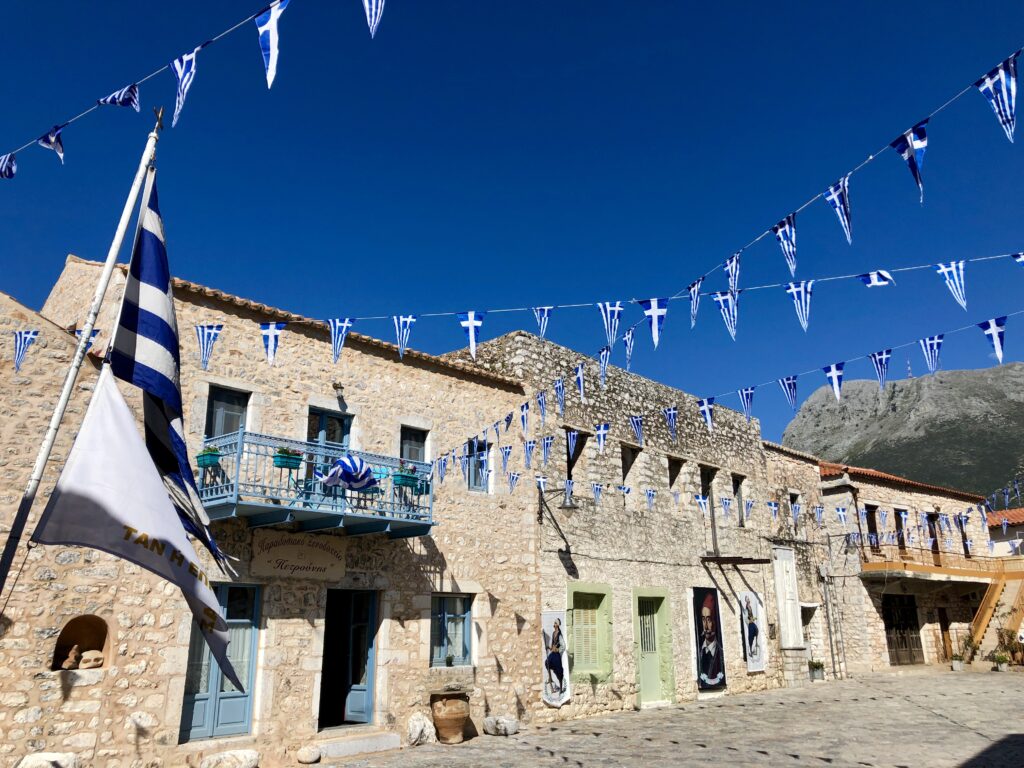
On March 17, 1821, war was declared on the Turks by the Maniots at Areopoli, in the Peloponnese capital of Mani.
An army of 2,000 Maniots under the command of Petros Mavromichalis, which included Kolokotronis, his nephew Nikitaras and Papaflessas, advanced on the Messenian town of Kalamata, which had an Ottoman garrison and they captured the city on March 23.
The Peloponnese, with its long tradition of resistance to the Ottomans, was to be the heartland of the revolt. In the early months of 1821, with the absence of the Turkish governor Mora valesi Hursid Pasha and many of his troops, the situation was favourable for the Greeks to rise against Ottoman occupation.

Theodoros Kolokotronis, a renowned Greek klepht who had served in the British army in the Ionian Islands during the Napoleonic Wars, returned on January 6, 1821, and went to the Mani Peninsula.
The Turks found out about Kolokotronis’ arrival, and demanded his surrender from the local bey, Petros Mavromichalis, also known as Petrobey. Mavromichalis refused, saying he was just an old man.
The crucial meeting was held at Vostitsa (modern Aigion), where chieftains and prelates from all over the Peloponnese assembled on January 26. There the klepht captains declared their readiness for the uprising, while most of the civil leaders presented themselves skeptical, and demanded guarantees about a Russian intervention.
Nevertheless, as news came of Ypsilantis’ march into the Danubian Principalities, the atmosphere in the Peloponnese was tense, and by mid-March, sporadic incidents against Muslims occurred, heralding the start of the uprising.
The traditional legend that the Revolution was declared on March 25 in the Monastery of Agia Lavra by the Archbishop of Patras Germanos is a later invention.


To commemorate the 200th anniversary, the Municipality of Eastern Mani has released a documentary entitled "MANI AND 1821".
